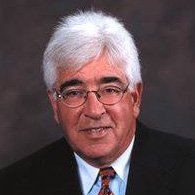Give Yourself the Best Chance for Case Acceptance
March 14, 2018
In my last post I talked about what the doctor should say and do at a second visit precipitating event consultation. Essentially the doctor needs to present three treatment options and inform the patient of the approximate total fee along with an estimate of what dental insurance will pay for each treatment option. Once that has been completed and the doctor has answered any questions the patient may have, the doctor brings in the treatment coordinator and the doctor leaves the treatment room.
The treatment coordinator is the person to ask the patient which of the three options they would like to choose. I believe that patients are much more comfortable asking questions to someone they feel is more on their level. “What would you do?” is something you often hear from the patient when speaking with the staff member. That question provides the perfect opportunity for the staff member to tout the doctor’s clinical skills. “I know you will be so happy if you go forward with this because he/she is amazing and does really beautiful work.”
Patients are often intimidated by the doctor asking them what they want to do. And many doctors are much more comfortable letting someone else handle this request so that they are not perceived as being a sales person. So there is a double benefit with this approach.
The hoped for outcome is that the patient makes a choice, financial arrangements are made, and the patient schedules an appointment to begin treatment. With a precipitating event, this should happen most of the time. When that doesn’t happen, the treatment presenter needs to find out why. What is the patient’s concern about moving forward?
There are only three reasons for hesitation on the part of a patient to accept treatment recommendations for a dental situation that must be treated: money, fear, and time out of work. Using what is called the “objection formula” will be a big help in getting the patient to make a commitment. There are three parts to the formula. Part one is to agree with the patient’s concern. The second part is to rephrase the patient’s statement into a question. And the third part is to present the “what ifs”. Take a few minutes and listen to how this objection formula works.
Treatment acceptance for precipitating events should be in the 90% range. I hope my suggestions from these last few posts will help you to achieve that level of success.
No Comments
No comments yet.
RSS feed for comments on this post.
Sorry, the comment form is closed at this time.

